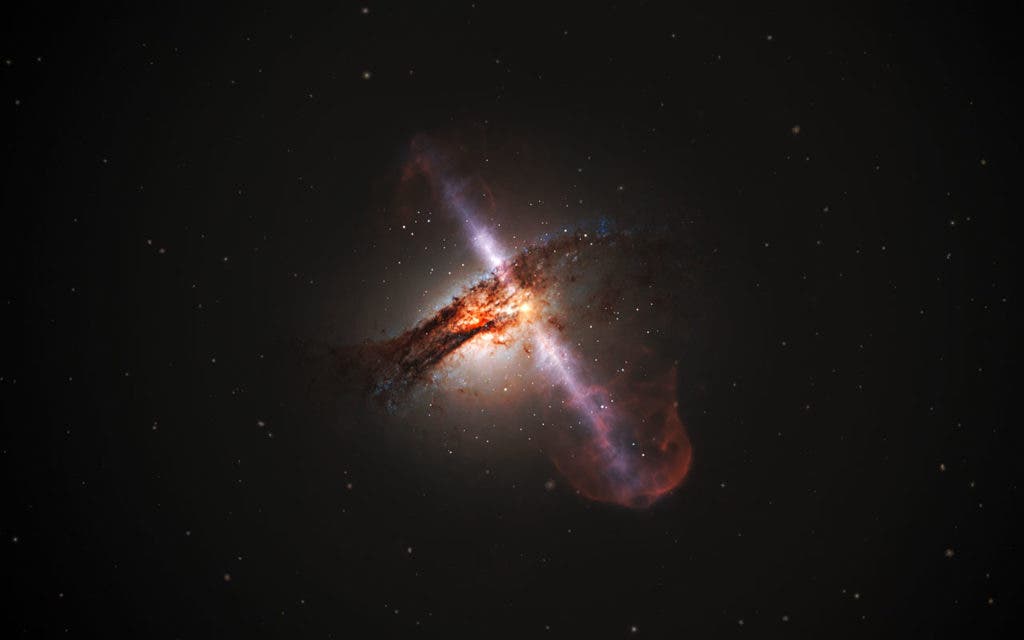According to the unified model for the evolution of galaxies and quasars, Type I and Type II galaxies have the same fundamental structure and energetic profile. The two types of galaxies look different to us, however, because they point toward Earth at different angles, this theoretical framework suggests. Astronomers now report that not only do Type I and Type Ii galaxies look different, they are, in fact, different from each other.

The team comprised of more than 40 scientists used NASA’s Swift Burst Alert Telescope to examine 836 active galaxies with high-energy or ‘hard’ X-rays, the same radiation involved in imaging human skeletons. The results were then compared to data from 12 different ground-based telescopes in order to assess the mass and growth rate of the galaxies’ active nuclei. For a galaxy, this nucleus coincides with a supermassive black hole whose massive gravity keeps millions of stars in check around its center.
Black hole behavior defines galaxies
The differences in X-ray spectra between the type I and Type II galaxies unambiguously suggest that the two are not the same at all, structurally or energy-wise. Specifically, the black holes at the center of Type I galaxies consume matter and energy significantly faster than those that lie at the heart of Type II galaxies. The results are backed by previous observations that showed Type II galaxies have a lot more dust in the vicinity of the black hole, dust which pushes against the gas that’s funneled into the black hole by gravity.
“The unified model has been the prevailing wisdom for years. However, this idea does not fully explain the differences we observe in galaxies’ spectral fingerprints, and many have searched for an additional parameter that fills in the gaps,” Richard Mushotzky, a professor of astronomy at UMD and a co-author of the study, said in a statement.
“Our new analysis of X-ray data from NASA’s Swift Burst Alert Telescope suggests that Type I galaxies are much more efficient at emitting energy.”
For decades, astronomers have been studying Type II galaxies in a disproportionate amount because the high-intensity brightness of Type I galaxies made them more difficult to study. Since the unified model suggested the two types of galaxies were very similar, if not the same, many conclusions that were appended to Type I galaxies from Type II observations might require revising. In the future, more such work will help scientists get a better grasp of how black holes influence the evolution of their host galaxies.
As an interesting sidenote, this project first began as a doctoral thesis of one of the researchers involved with the team. Realizing the significance, other researchers jumped on board into had since become a very lucrative collaboration in science.
“This project began in 2009, as part of my doctoral work at UMD, and has radically grown with the help of more than 40 researchers across the globe,” said Michael Koss (M.S. ’07, Ph.D. ’11, astronomy), a research scientist at Eureka Scientific, Inc. and a co-author of the paper. “When I started out, I spent a month of lonely nights by myself at the Kitt Peak National Observatory observing a few dozen galaxies. I never dreamed we would eventually expand to such a large sample, enabling us to answer many amazing scientific questions for the first time.”
Scientific reference: The close environments of accreting massive black holes are shaped by radiative feedback, Nature(2017). DOI: 10.1038/nature23906



